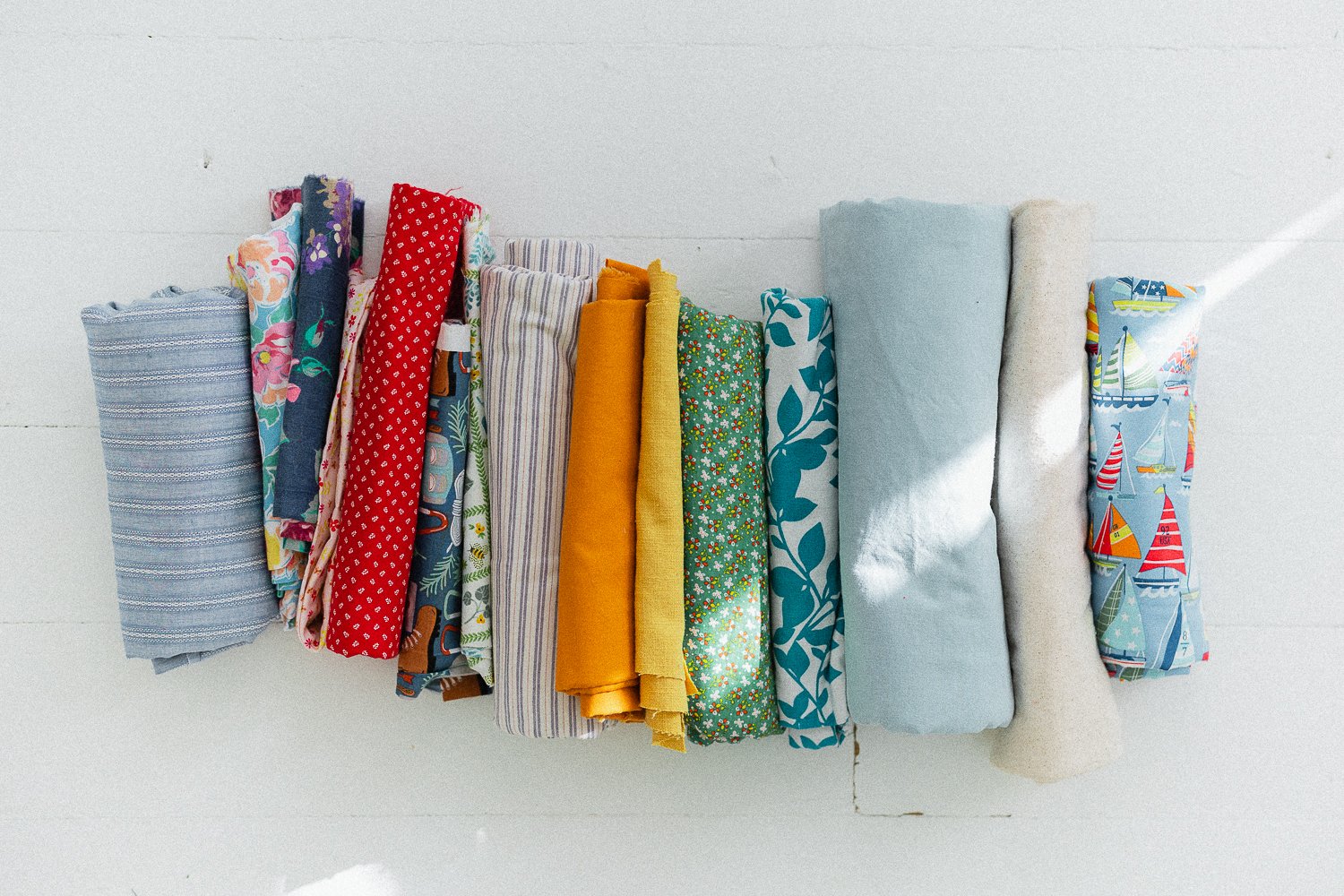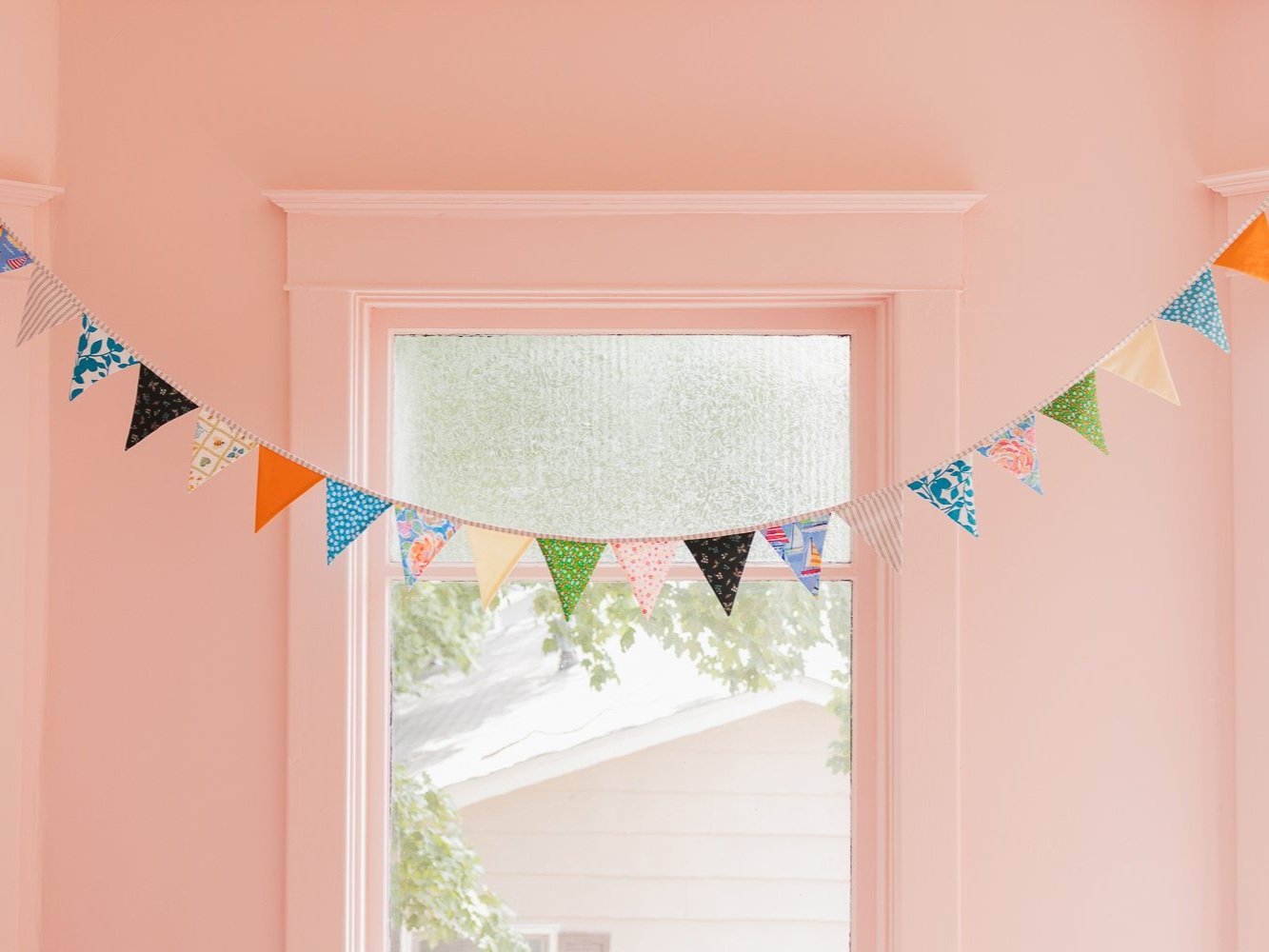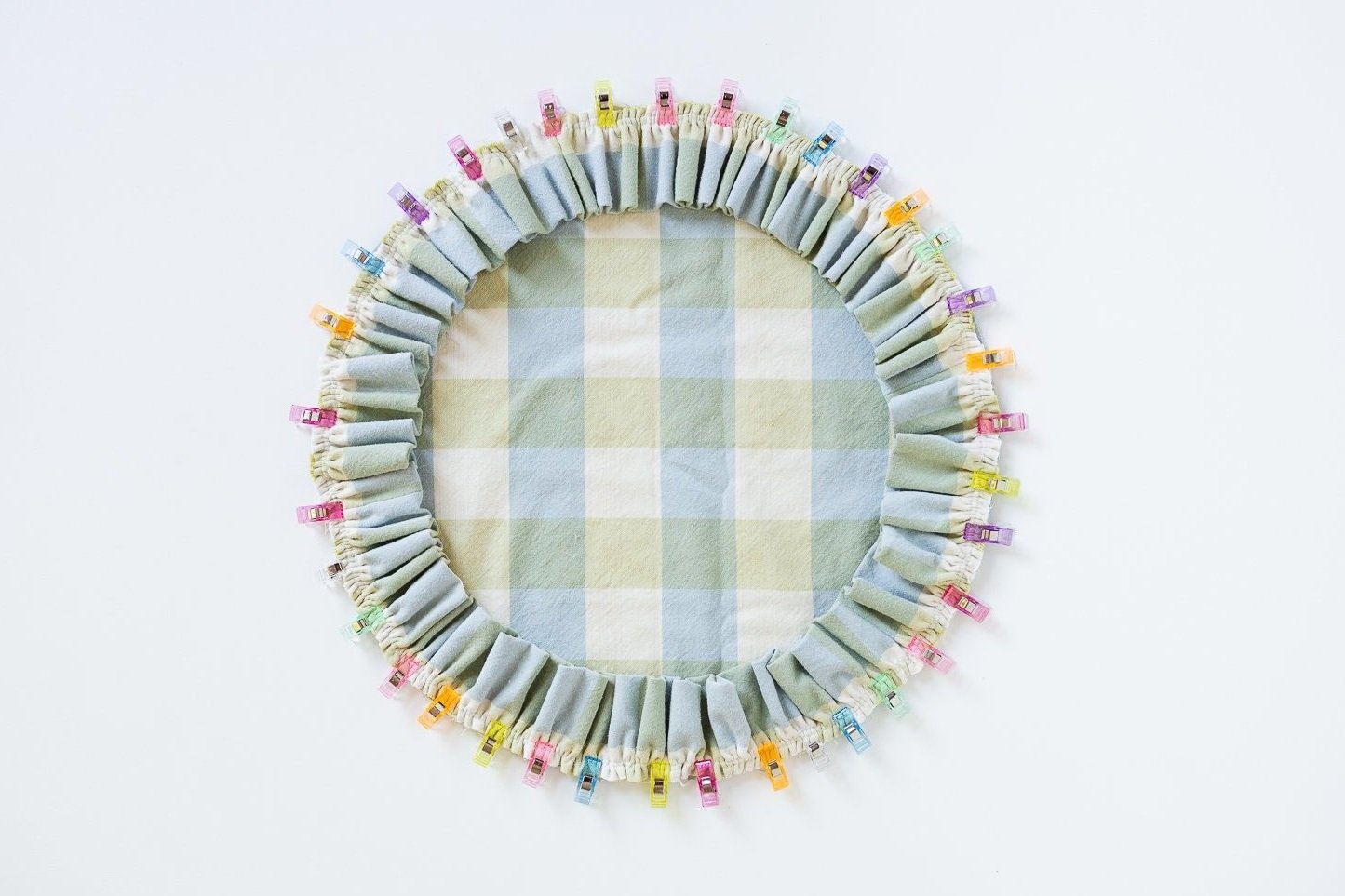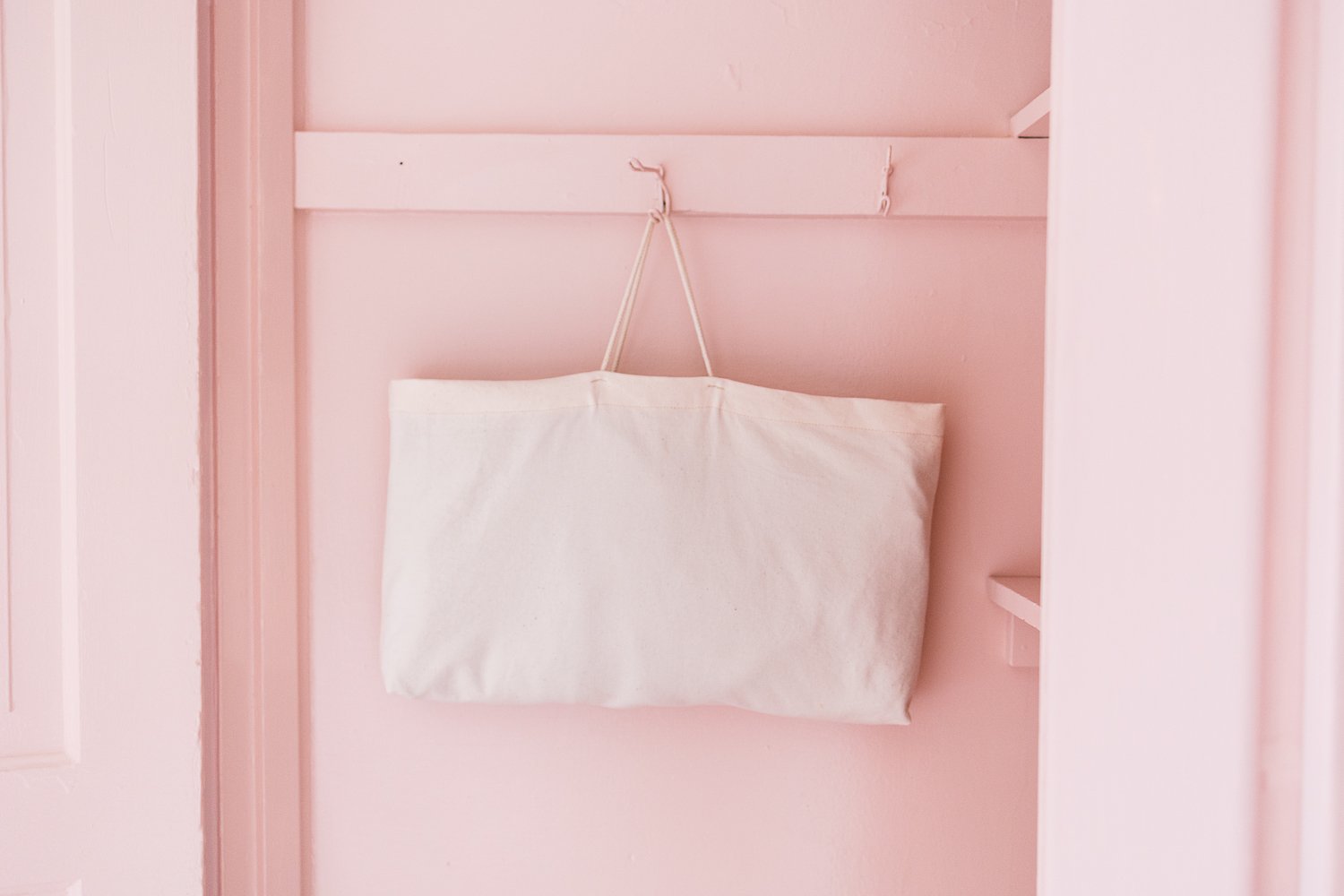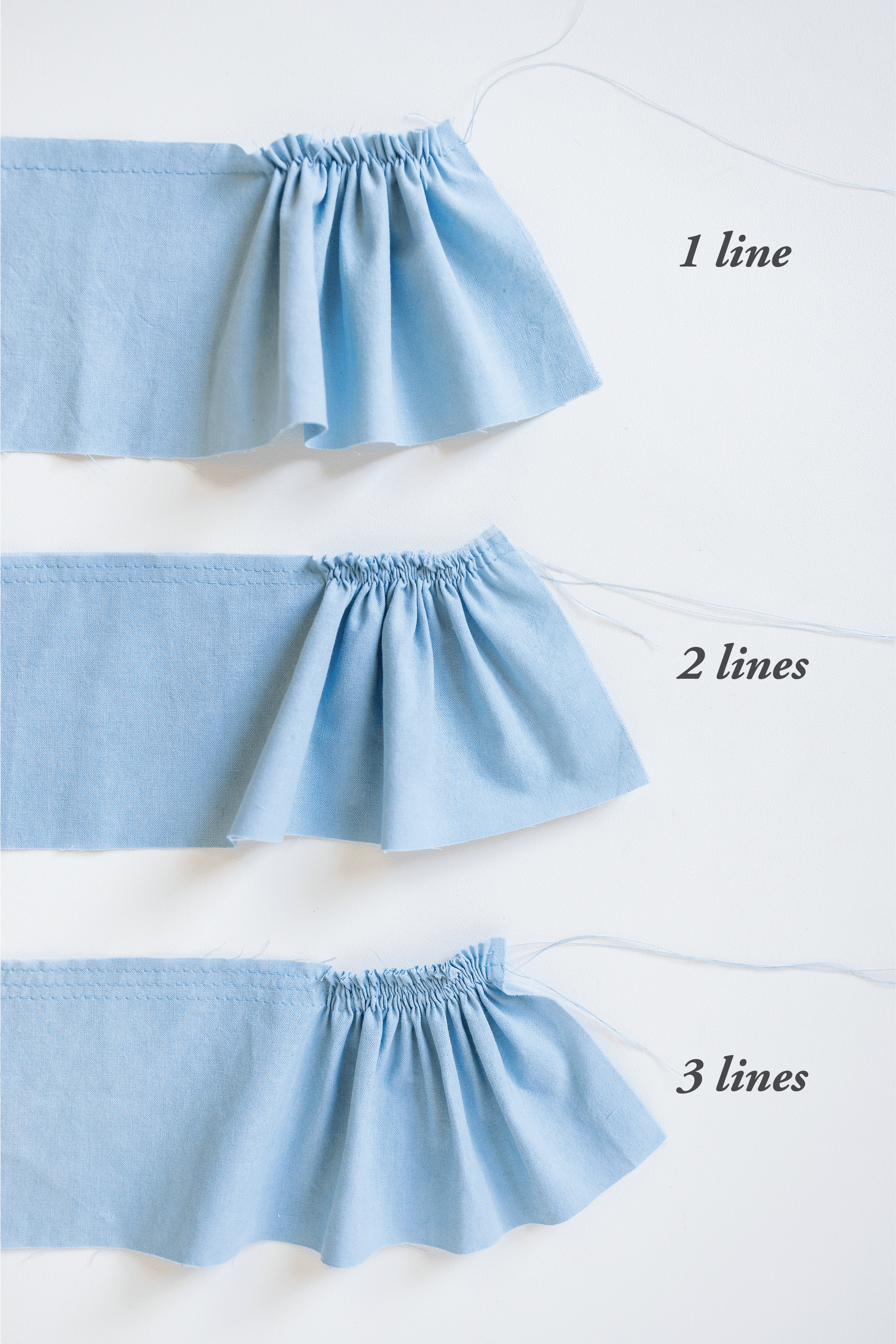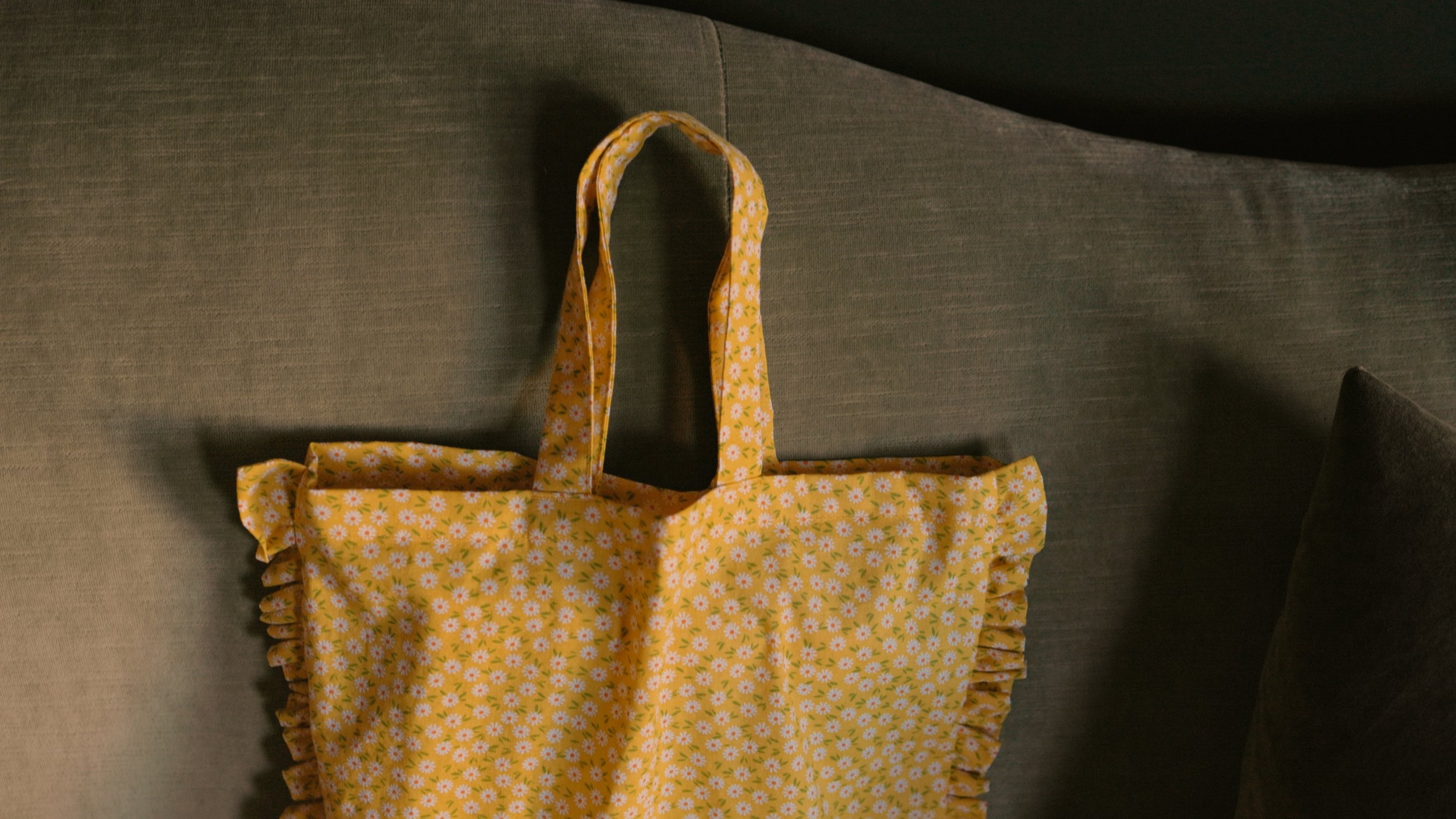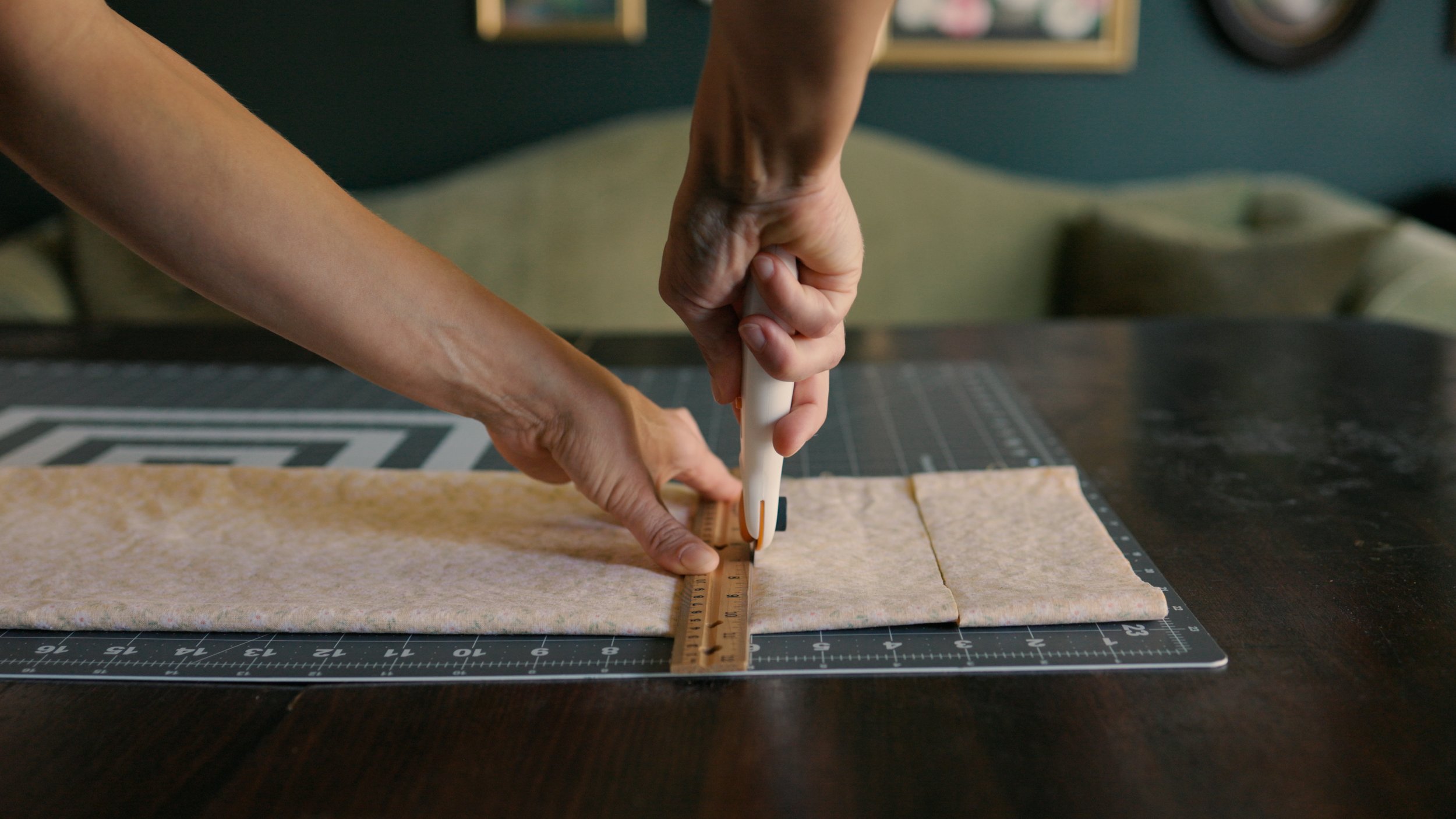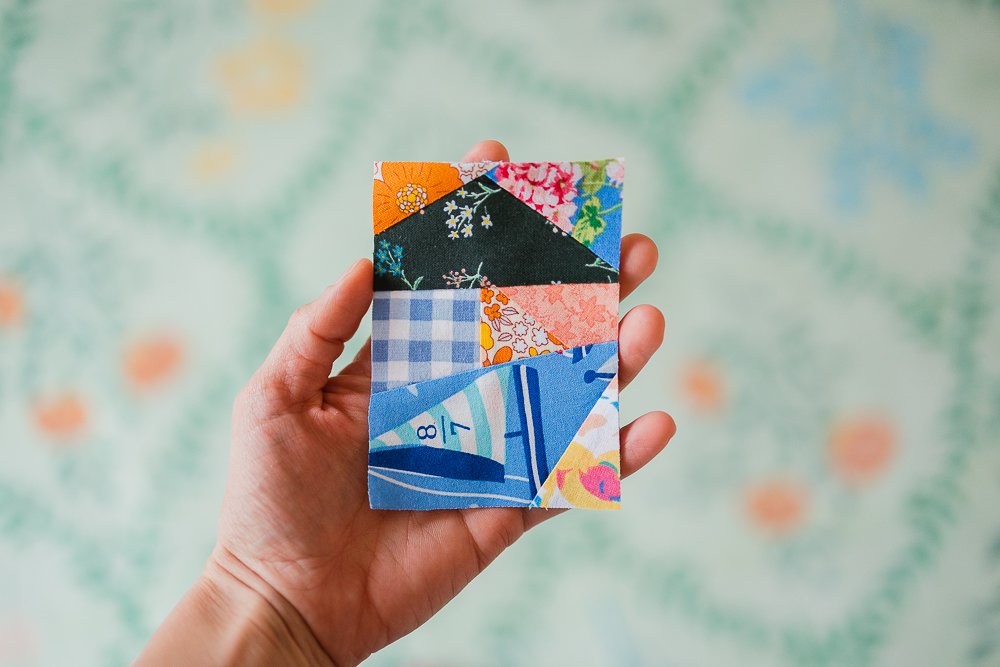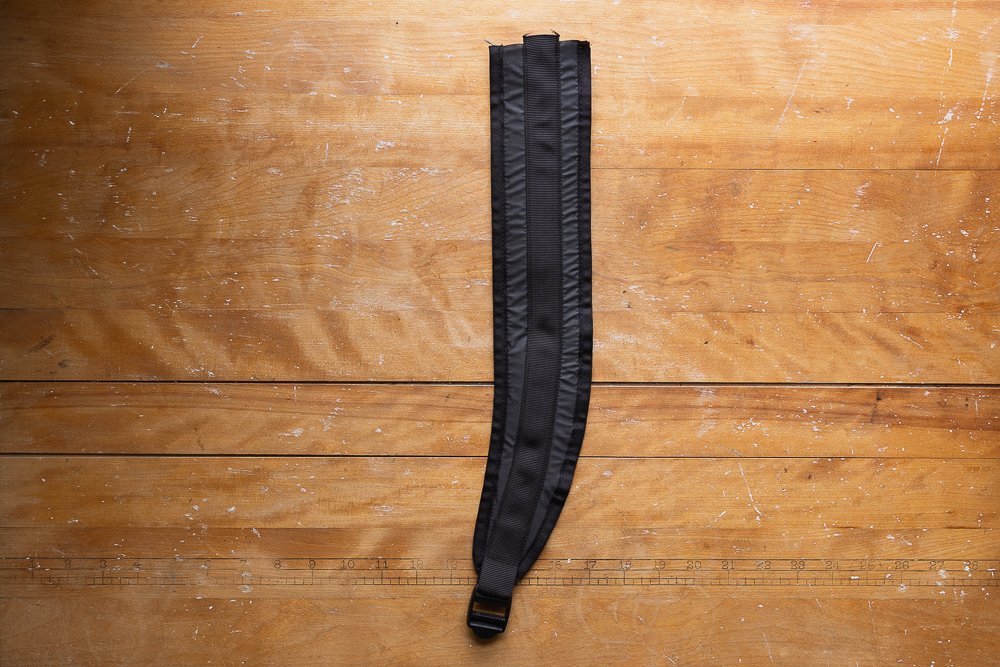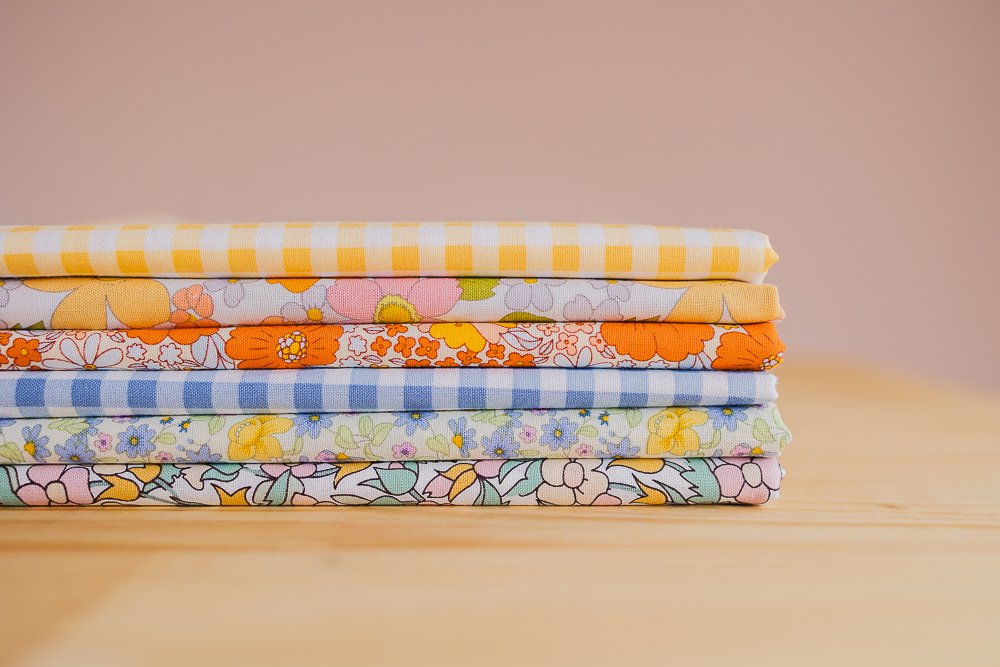One fun thing about sewing is building up memories of what fabrics you’ve used for each project and what events happened while using or wearing those projects. With the blue floral I lined some backpacks. With the dark green I made a long quilted jacket. With the darker blue floral I made a ruffle tote bag. Each little banner is a reminder of the playful pursuit of sewing.
I hope this tutorial can serve you well as you put together your own banner of memories.
Before you get started, grab the free Bunting Banner PDF pattern here!
Step 1: Dig through your scrap drawer and select several fabrics. (Or splurge and go buy fun new fabrics!)
Step 2: Calculate how long you want the bunting banner to be and how many little banners you’ll need to fill the space. Each little banner is about 5 1/2” (14 cm) wide.
Once calculated (or happily estimated), cut out the fabric using the free bunting banner pattern piece!
Tip: Cut the pattern piece out of felt or a similar material that likes to stick to fabrics when making repetitive cuts like this. While a paper pattern can slide around while cutting or takes extra time pinning, some fabrics just stay put. It can make the cutting part of this assembly line easier. Here I’m using a loose weave 100% brushed cotton fabric scrap.
Step 4: Fold the fabric right sides together. Sew along the long side with 3/8” seam allowance.
Tip: Sew a long chain from one to the next on your sewing machine and cut the threads apart in the next step.
Step 5: Snip some of the seam allowance off the bottom triangle.
Step 6: Turn them right side out. Use a pencil or point turner to reach the bottom triangle. Press with a steamy iron.
Step 7: Now comes the hard part. Lay them all out on the floor and decide what order you want them in.
Step 8: Stack them in order.
Step 9: Cut a long strip of fabric 1 3/4” (4.5 cm) wide. Long enough to sew all the little banners together and then some extra on both ends to tie it to something. You may have to cut this from multiple sections and sew the sections together.
Again, each little banner is about 5 1/2” (14 cm) wide, if that helps you calculate what you need.
Step 10: Sew sew sew! Use 3/8” (1 cm) seam allowance to sew the little banners to the long strip. Overlap the little banners a little bit as you sew, tucking each one under the one currently being sewn.
If you know how much extra length you calculated for tying, you can start sewing the little banners there. Or if you just estimated the whole thing and have no idea, find the middle of the strip and start sewing down each side from there.
Here’s what the front and back look like.
Step 11: Press the strip up. Fold the top of the strip over until it meets the raw edge of the little banner. Fold over again and sew sew sew. Press each step with steamy iron before sewing for best results.
That’s it! You have your own bunting banner!
If you enjoyed this tutorial, you may also enjoy…
Enter the height, length, and width of your desired tote bag and this quickly tells you what size to cut the fabric. With illustrated instructions on how to sew the bag together.
This is a great pattern for a beginner bag maker. A simple, sturdy, quick to sew, waxed canvas bag.
Enter the length, width, and height of your desired boxy pouch and this tells you what size to cut the fabric and how to sew it together.























